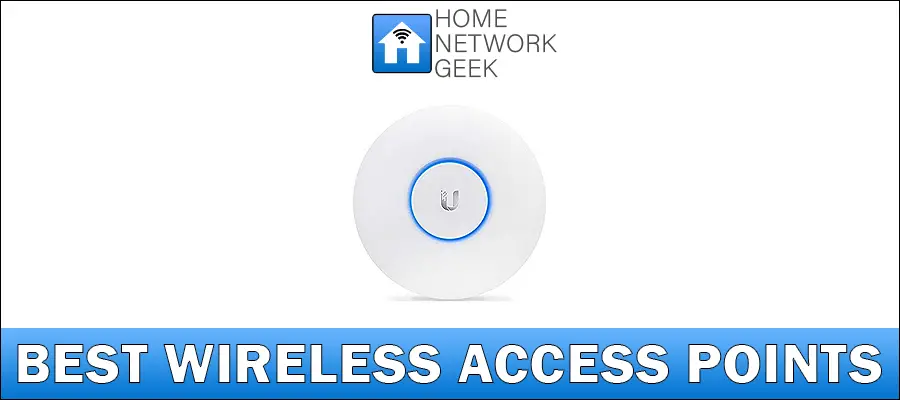
Affiliate Disclosure: As an Amazon Associate I earn from qualifying purchases.
A wireless access point can be a great addition to a home network if you have a large home where the builtin Wi-Fi from your router doesn’t quite cover the entire area.
They also come recommended if you have a particular room where you need the best possible Wi-Fi signal, such as a home office.
I’ve done quite a bit of research into various different wireless access points and found these three which I believe do an excellent job at improving the wireless connectivity in a home network.
Top 3 Recommended Wireless Access Points
- Ubiquiti UniFi UAP-AC-PRO – The gold standard in WAPs that offers excellent speeds, lots of features and integrates seamlessly with other UniFi products
- NETGEAR WAC540 – A tri-band access point that provides superior coverage, uses 4×4 MU-MIMO technology and speeds of up to 3,000 Mbps
- Comfast AC1200 – This is your budget-friendly option but is excellent value for money and can safely be used outdoors with an IP66 rating
Why I Picked the Ubiquiti UniFi UAP-AC-PRO
There are a few reasons for me picking the Ubiquiti UniFi UAP-AC-PRO as the recommended router.
- Small and lightweight for both indoor and outdoor use
- Dual-band using 3×3 MIMO technology and supports the 802.11AC wireless standard
- Total speeds of up to 1,750 Mbps
- Powered by PoE
- Two Ethernet ports and a single USB 2.0 port
- Easy to set up and configure through the UniFi controller software
- Works excellent alongside other UniFi products
What to Consider When Buying a Wireless Access Point
- Weatherproof – If your planning on placing a WAP outside, make sure it is weatherproof and can handle the rain as well as the temperature depending on the climate you live in. Aim for one with an official IP rating if you do plan on installing it in the yard
- Signal gain – The higher the signal gain, the further away the signal can be sent, but it will cover less total area. For a home network, you’re probably better off with a WAP that uses a lower signal gain given how you don’t need the signal to span huge distances
- Coverage – WAPs with omnidirectional antennas will cover a broader area but not send the signal to far; try and keep the coverage area within 400 feet
- Power over Ethernet – PoE-enabled WAPs allow you to provide both power and data over a single Ethernet cable, making for a much easier and more convenient install
- Wi-Fi technologies – The latest Wi-Fi technologies such as MU-MIMO will only improve on the quality of the Wi-Fi signal you receive. Keep an eye out for these in the features list
- Ease of setup – Some WAPs will be easier to set up than others. UniFi and TP-Link are relatively easy whereas brands like Cisco and EnGenius can be a bit more challenging
- Watchdog hardware timer – A watchdog hardware time allows the WAP to periodically check in with the network’s gateway and automatically reboot itself if necessary. This just saves you having to do it manually
- IEEE standard – The latest standard is 802.11AC which I would always recommend going for whenever purchasing a device that uses Wi-Fi. Thankfully, most modern devices will meet this standard
- Antennas – Some antennas will be internal whereas others are external and can be adjusted or even removed. It’s possible to point the antennas in a certain direction to improve the signal quality by just that little bit
- Controller-based vs Standalone – A standalone WAP covering a relatively small area and fewer devices will do the job nicely, but as your coverage and device demands increase, you may want to look at one that is controller based
- Support – Check out the reviews of the support that each company provides, just in case you come to rely on them in the future. This may need to be more of a consideration for those of you that aren’t overly familiar with networking hardware and may need a hand getting everything setup